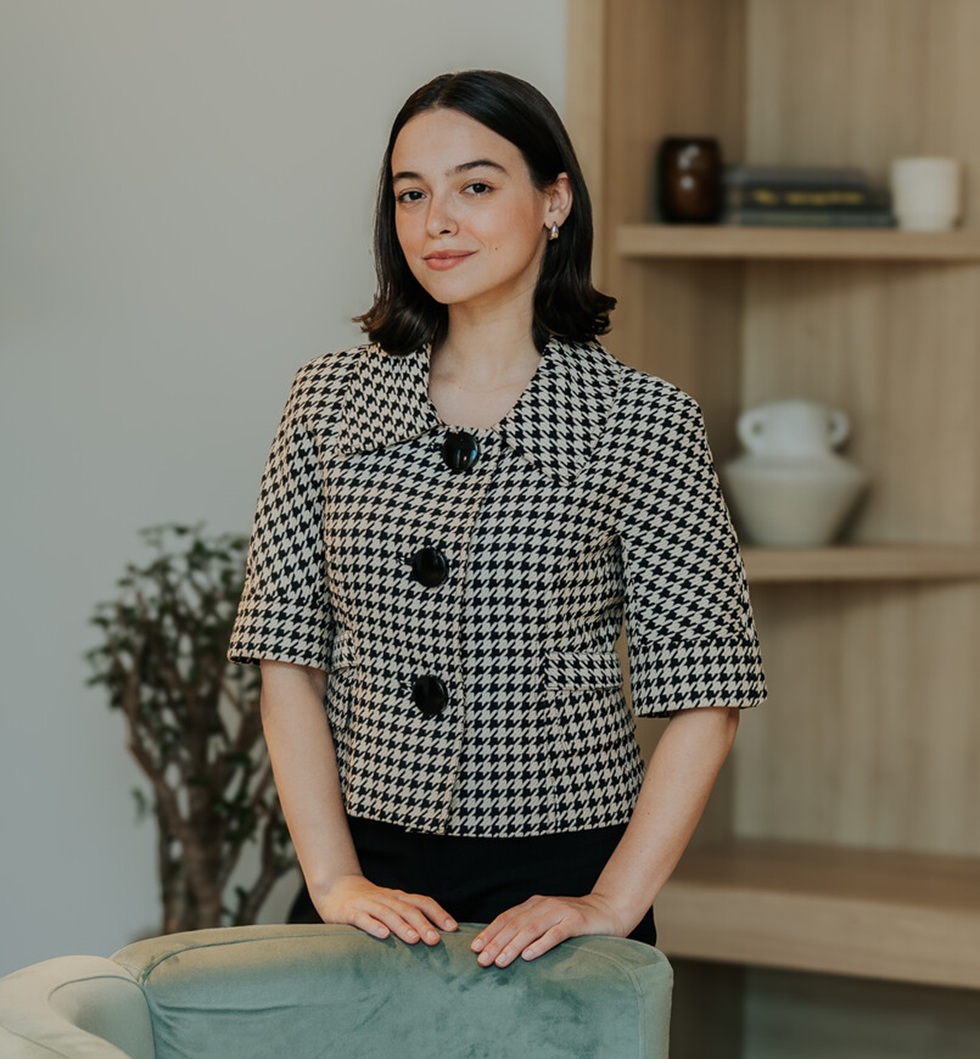Entertainment
Valeria Bardi Cohen Redefines Architecture as a Dynamic Dialogue

Valeria Bardi Cohen, an architectural designer at the acclaimed S9 Studio, views architecture as a conversation rather than a mere combination of form and function. For Bardi Cohen, design is a process of listening and response, engaging with the complexities of human experience and the permanence of materials. “Each building tells a story,” she emphasizes, “but that story is never static.” Her work embodies a rich tapestry of history, culture, and environmental consideration, embracing the imperfections that time introduces.
From Observation to Intuition
Bardi Cohen’s design philosophy begins long before concepts are drawn. She meticulously observes how people navigate spaces, how light interacts with surfaces, and how materials weather over time. This analytical and emotional form of observation helps her understand architecture as a mediator between the physical and perceptual realms.
She considers sketching and model-making not as mere representations but as tools of inquiry. “Drawing can reveal what the mind has not yet articulated,” she notes. As her ideas evolve, she integrates digital tools to test and refine concepts developed through physical exploration. This fusion of analog and digital processes enhances both accuracy and efficiency, while the essence of her work remains rooted in human experience—texture, temperature, and interaction.
Repair as a Methodology
The concept of repair serves as both a strategy and mindset in Bardi Cohen’s projects. This idea originated from her award-winning thesis, Architecture After Extraction: Nada Muere en México, which examined how post-industrial sites can be revitalized to foster regeneration. She believes that to repair is to acknowledge the latent potential within existing structures, preserving cultural continuity while redefining their utility.
Bardi Cohen’s recent undertakings in adaptive reuse and large-scale planning illustrate this philosophy. By transforming underutilized industrial areas into vibrant mixed-use districts or converting former manufacturing buildings into research and educational centers, her designs exemplify how architecture can connect memory with innovation, allowing cities to evolve without erasing their past.
Storytelling as a Design Framework
For Bardi Cohen, the art of storytelling is fundamental to how spaces are perceived. She asserts that circulation, light, and proportion shape emotional responses within environments. Storytelling transforms buildings from static entities into dynamic experiences that unfold with movement and use. “Each person reads space differently,” she explains. “That diversity of interpretation is what keeps architecture alive.” This narrative approach empowers both the designer and the occupant, ensuring that spaces communicate effectively across different contexts.
Bardi Cohen’s commitment to mentorship and teaching has reinforced her belief in the evolving nature of architecture. Guiding students at Pratt Institute and other institutions reminds her of the importance of curiosity and reinterpretation in design. “Mentoring keeps me connected to the essence of why we design,” she states. “It’s about inquiry, experimentation, and generosity.” This philosophy permeates her professional practice, where each project becomes an ecosystem for history, context, and imagination to coexist.
A Global Perspective on Design
Having lived between Latin America and the United States, Bardi Cohen possesses a nuanced understanding of how culture and place influence design. From the adaptable nature of Latin American cities to the vertical density of New York, she recognizes the need for architecture to remain flexible while preserving its identity. Her approach strikes a balance between spontaneity and structure, craft and computation, as well as history and speculation.
Through her work, she continues to create architecture that remembers—designs that honor existing realities while envisioning future possibilities. Her commitment to integrating storytelling and repair into her designs demonstrates a profound respect for the past, while also embracing the potential for transformation and growth.
This article was produced in collaboration with APG.
-

 Lifestyle4 months ago
Lifestyle4 months agoLibraries Challenge Rising E-Book Costs Amid Growing Demand
-

 Sports4 months ago
Sports4 months agoTyreek Hill Responds to Tua Tagovailoa’s Comments on Team Dynamics
-

 Sports4 months ago
Sports4 months agoLiverpool Secures Agreement to Sign Young Striker Will Wright
-

 Lifestyle4 months ago
Lifestyle4 months agoSave Your Split Tomatoes: Expert Tips for Gardeners
-

 Lifestyle4 months ago
Lifestyle4 months agoPrincess Beatrice’s Daughter Athena Joins Siblings at London Parade
-

 World4 months ago
World4 months agoWinter Storms Lash New South Wales with Snow, Flood Risks
-

 Science3 months ago
Science3 months agoSan Francisco Hosts Unique Contest to Identify “Performative Males”
-

 Science4 months ago
Science4 months agoTrump Administration Moves to Repeal Key Climate Regulation
-

 Business4 months ago
Business4 months agoSoFi Technologies Shares Slip 2% Following Insider Stock Sale
-

 Science4 months ago
Science4 months agoNew Tool Reveals Link Between Horse Coat Condition and Parasites
-

 Sports4 months ago
Sports4 months agoElon Musk Sculpture Travels From Utah to Yosemite National Park
-

 Science4 months ago
Science4 months agoNew Study Confirms Humans Transported Stonehenge Bluestones









